Risks to Groundwater in India’s Solar Irrigation Pump Expansion
Cheap solar power, widely available, could worsen India’s already depleted aquifers.
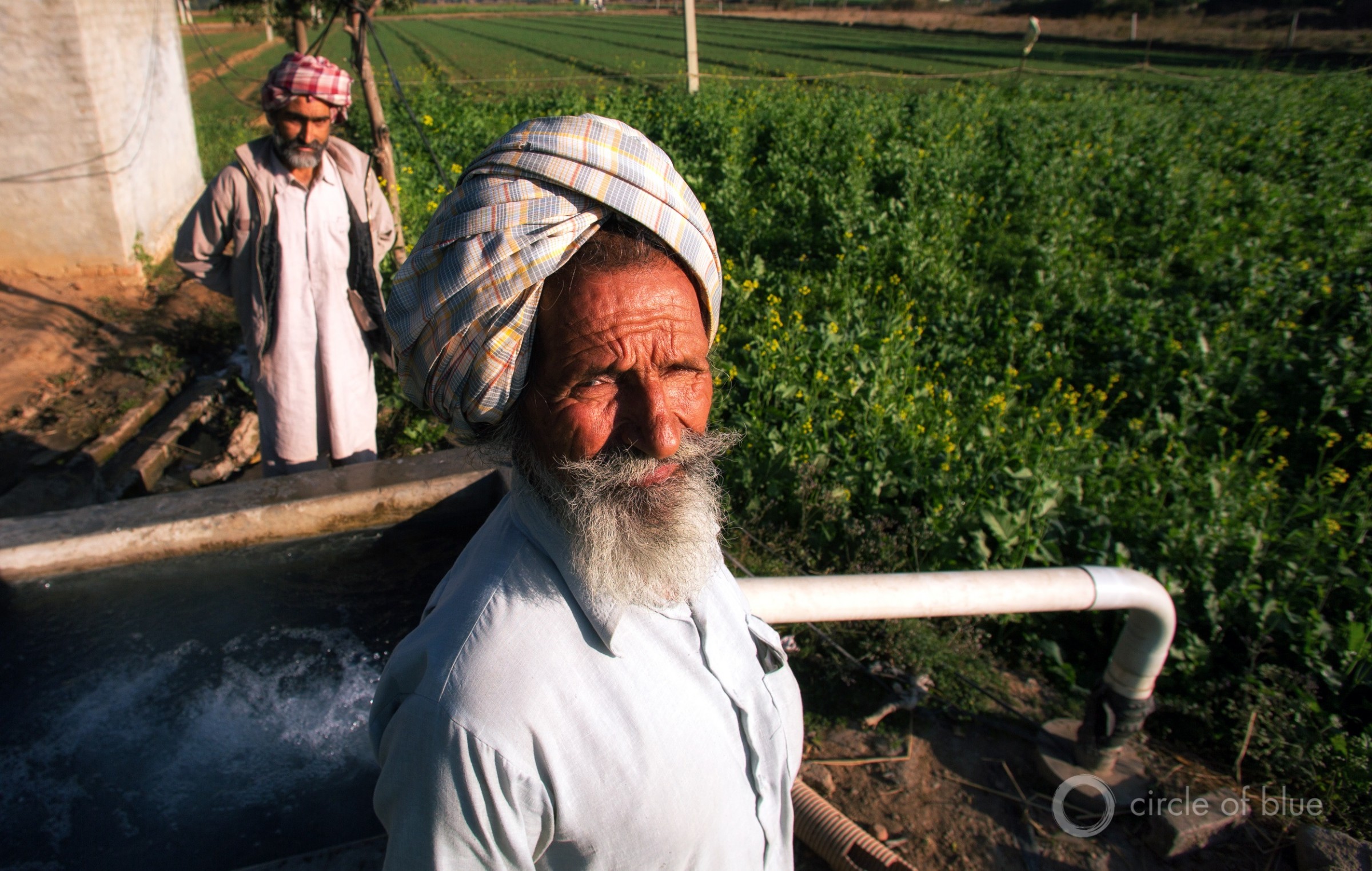
Just outside the village of Parchh in India’s northern Punjab state, Nagh Singh, in this photo taken in December 2012, stands in front of the irrigation well that he has owned for close to 30 years. About 15 families who together sharecrop three hectares of neighboring land rely on this water, which runs for 18 to 20 hours per day every 20 days or so, when the electricity is coming through the lines. Photo © J. Carl Ganter/Circle of Blue
By Brett Walton, Circle of Blue
India’s drive to install millions of solar-powered irrigation pumps has worthy intentions. The government aims to lift farm productivity and boost rural income while relieving the state of a budget-draining subsidy for electric power.
But if not carefully implemented, researchers warn, the solar pump program, which subsidizes installation costs, could backfire in a significant way: by accelerating the draining of India’s groundwater.
“Free power leads to groundwater exploitation,” Mandvi Singh of the Center for Science and Environment, a New Delhi-based research and advocacy group, told Circle of Blue. Singh, the co-author of a report that criticizes the government’s execution of the solar pump program, pointed to empirical evidence from the northern state of Punjab, where grid power is nearly free for farmers and groundwater levels have declined precipitously since 1997 when the policy was introduced.
India’s central and state governments want to unbind farmers from unreliable, centralized grid power. Thus the solar irrigation pump program, known by its acronym KUSUM. The Modi government, as part of a nationwide embrace of solar power, aims to install 1.75 million solar pumps that are not connected to the grid and 1 million that are. The equipment is subsidized by 60 to 90 percent, depending on the state.
KUSUM is still in its early days — about 240,000 pumps have been installed, nearly all in the last five years — but the potential for solar irrigation growth is enormous. India is home to more than 21 million electric pumps and 9 million diesel pumps, according to the CSE report.
Singh said that while CSE favors solar power in general it objects to the manner in which the solar pump program is being carried out. All solar pumps should be connected to the grid and a reasonable feed-in tariff should be established so that farmers can sell back electricity they do not need. Otherwise, she said, surplus electricity could be used to pump more water.
Other water-saving policies should be linked to the solar pump expansion, Singh added. Efficient irrigation equipment should be subsidized, and collecting and storing rainwater should be policy objectives, too. “There is no incentive for the farmer to be judicious with the water supply,” Singh lamented.
Karen Villholth, a researcher who specializes in groundwater at the International Water Management Institute, praised the CSE report for its comprehensive assessment of solar irrigation, including groundwater.
“It is commended for focusing on the issue of potential impacts on groundwater resources, which is often neglected, or only addressed in a piecemeal fashion,” Villholth wrote in an email to Circle of Blue. “Clear strategies, implementation of models and assessment of impacts of such strategies are clearly needed, to make sure solar irrigation in the longer term is both equitable and sustainable.”
The Problem with Free
India’s leaders are beginning to recognize the country’s unsustainable course for groundwater and acknowledge the urgency of the moment. India pumps more groundwater than any country, mainly for irrigation, and it shows. The average groundwater level in Punjab declined 17 inches (43 centimeters) a year between 2000 and 2013, according to the Central Ground Water Board, the government’s oversight body. In areas of Maharashtra the decline is several feet a year.
“The declining groundwater level is a big challenge for India…time has come to conserve, reuse, and use water judiciously,” Gajendra Singh Shekhawat, the water minister, said on August 23. A year ago a government think tank referred to plunging groundwater levels as the country’s “worst water crisis.”
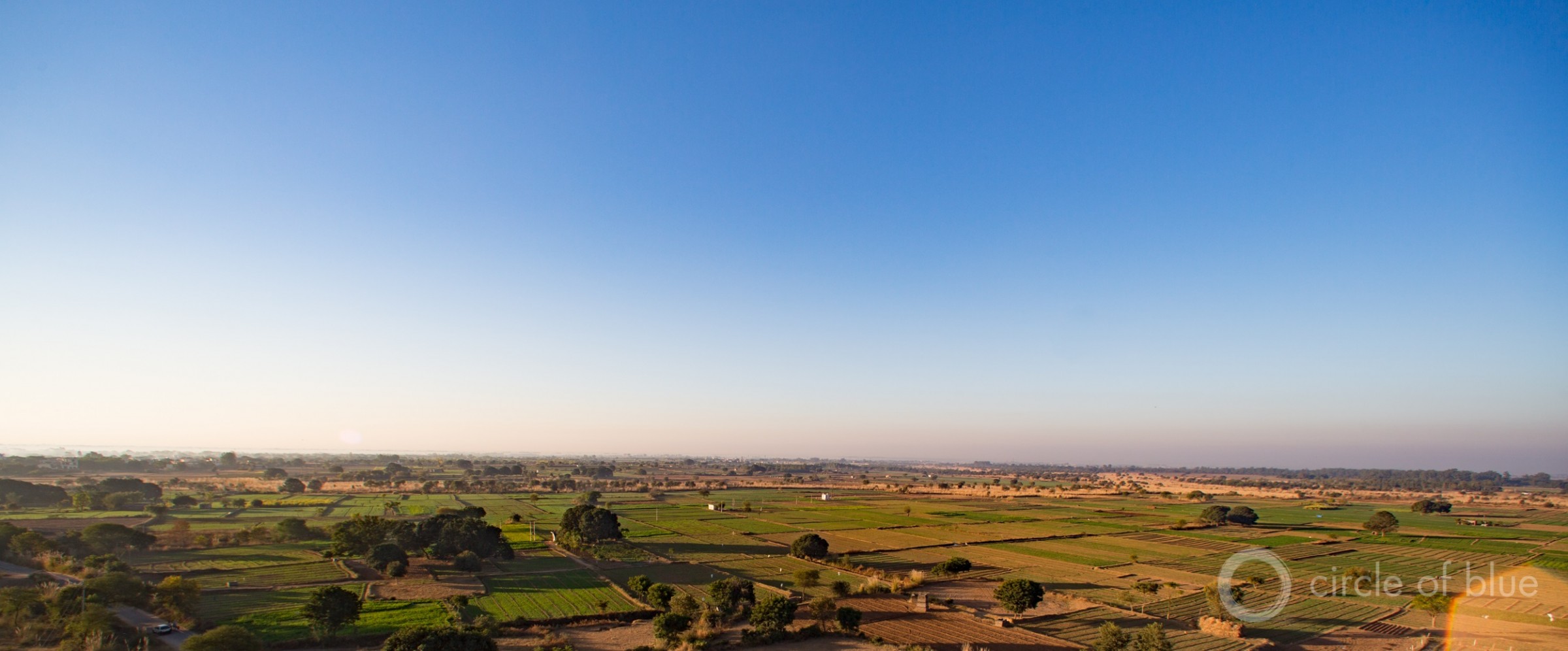
Irrigated fields outside of Delhi. Photo © J. Carl Ganter/Circle of Blue
More researchers watching the country’s farm economics have come to similar conclusions: cheap power results in groundwater depletion.
“Power reforms and electricity pricing for irrigation play a key role in averting the groundwater crisis in Punjab,” determined a 2017 study from the National Institute of Agricultural Economics and Policy Research. Farmers have no incentive to optimize water use when electricity is free, the researchers added.
A 2017 working paper for the South Asian Network for Development and Environmental Economics examined solar pumps in Rajasthan. The analysis found substantial benefits: solar pumps improved water access for farmers, increased cultivated area, raised profits, and decreased fossil fuel consumption. However, there was also evidence of increased groundwater extraction in order to expand cultivated area.
“We need innovative policies for governing ground water level in a sustainable way,” the paper concluded. “There is a need for metering agriculture water use and total water extraction by farmers using solar, electric, or diesel pump.”
Free comes with a cost, Singh and her colleagues also discovered. Their report was informed by interviews with farmers in three states with high penetration of solar pumps.
In the Buldhana district of Maharashtra, some 500 kilometers (310 miles) east of Mumbai, Mandvi surveyed 72 farmers who are using solar pumps. They told her that they preferred solar pumps to diesel or electric pumps or relying solely on rainfall. Grid power was patchy, availably six hours a day, sometimes only at night. With solar pumps, irrigation costs were lower and yields higher, which meant greater income.
But there was a drawback in Buldhana. Because of declining groundwater tables, farmers could not maximize their use of solar pumps. Hours of irrigation actually decreased in the last three years as the water table declined.
“Groundwater levels were so low that the pumps were not being used five months of the year,” Singh said. “What about five or 10 years ahead?”
Brett writes about agriculture, energy, infrastructure, and the politics and economics of water in the United States. He also writes the Federal Water Tap, Circle of Blue’s weekly digest of U.S. government water news. He is the winner of two Society of Environmental Journalists reporting awards, one of the top honors in American environmental journalism: first place for explanatory reporting for a series on septic system pollution in the United States(2016) and third place for beat reporting in a small market (2014). He received the Sierra Club’s Distinguished Service Award in 2018. Brett lives in Seattle, where he hikes the mountains and bakes pies. Contact Brett Walton

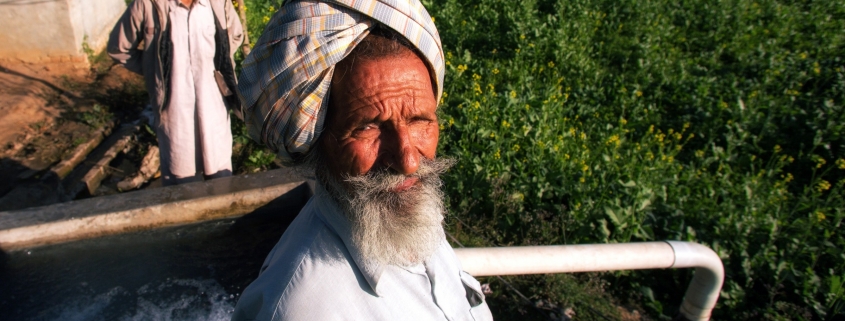

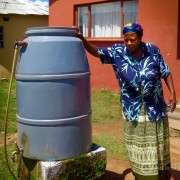
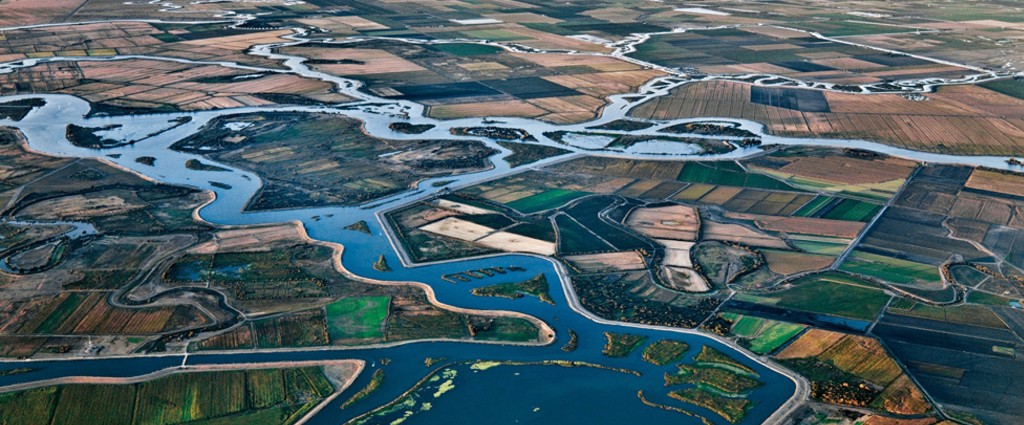
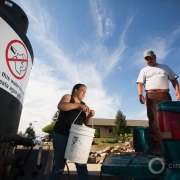
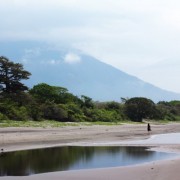

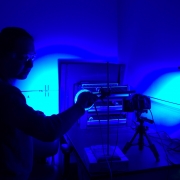



Leave a Reply
Want to join the discussion?Feel free to contribute!